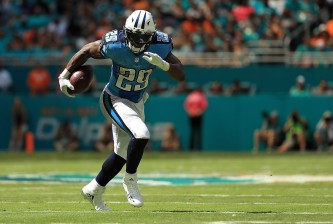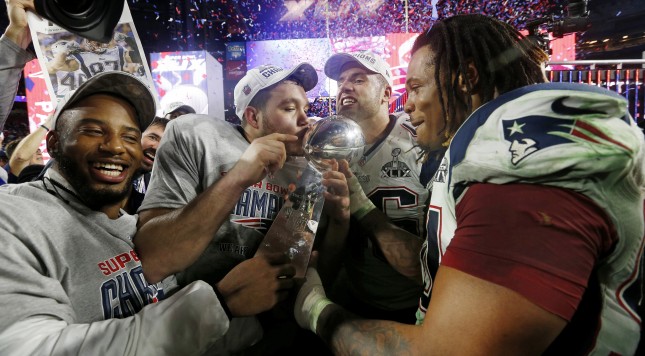Bill Belichick and Pete Carroll hold more power in their respective organizations than arguably any NFL coach, but the surrounding parts around them have played a key role in these franchises becoming the class of the league in roster building.
Ownership, the front office and coaching staffs have executed to perfection together, and together they focus on four critical parts to assembling a championship-caliber roster. Some NFL teams implement these quite well already, while many in this “copy cat” league will look to emulate what these two organizations have done.
Scheming to fit a quarterback’s skill set is just as important as the personnel around him.
This sounds obvious, but it doesn’t mean throwing big cap money and draft capital at wide receiver is absolutely necessary. Tom Brady and Russell Wilson’s strengths—and limitations —comprise the ethos of their offense.
Each franchise ranked sub-top 10 in cap spending on receiver, per Spotrac, with the Patriots at 12th and the Seahawks at 28th. While six offensive linemen drafted in the first two rounds started on Super Bowl Sunday, the Patriots (29th) and Seahawks (17th) both finished in the bottom-half in Pro Football Focus‘ pass-blocking grading.
New England mitigated this by having Brady release the ball quicker than any quarterback in the league outside of Peyton Manning, per PFF, with Brady’s passes released in less than 2.5 seconds on 74.5 percent of his dropbacks during the Super Bowl. Belichick let Wes Welker go, but gave Brady a slew of receiving options that can run a complex set of combo routes. It’s extremely difficult to stop Julian Edelman, Brandon LaFell and Danny Amendola along with tight end Rob Gronkowski and running back Shane Vereen.
“They take the types of players that fit what they do, or have a skill or two that fit with what they do,” said Ted Sundquist, director of college scouting during both Denver Broncos championships (and later became the team’s general manager). “They maximize that strength versus focusing on the weakness and what the guy doesn’t have.”
Seattle may not possess receivers that beat good man coverage with much regularity, as NFL Films’ Greg Cosell and Sports Illustrated’s Doug Farrar have discussed, but their use of Marshawn Lynch and the read-option wears teams down throughout the game. By the time the second half rolls around, opponents are exhausted when Wilson extends plays, which helps Doug Baldwin and Jermaine Kearse use their savvy to gain separation. This offense thrives on those shot plays more than most. Paul Richardson, the running backs and Luke Willson each have the ability to quickly gain yards after catch as well.
It all starts at the top. Cohesion, stability and patience in the front office will trickle down to player development.
Paul Allen and Robert Kraft have given their head coaches the keys while remaining invested in the organization. Kraft didn’t have a knee-jerk reaction to Belichick’s five-win first year in New England and neither did Allen when Carroll began his time in Seattle with two losing seasons.
Sundquist stressed that owners who do not consider the full dynamic of team building will “Just be constantly looking for the next answer. And so after two or three years, they’ll fire whomever and they’ll go to the next guy.”
This sense of stability filters through the coaches and general managers, Patriots Director of Pro Personnel Nick Caserio and Seahawks general manager John Schneider. The head coaches have final say on personnel, but are aided greatly by their approach and relationship with the leader in their front office.
“Coaching is a very short-term, emotional profession,” said Sundquist, who says he worked with Mike Shanahan in a more “czar coach” situation akin to Belichick-Caserio. “A lot of decision-making processes are made upon what happened this past Sunday. I’ve always thought the counterbalance to that would be the general manager whose responsibility is, ‘Yeah we’ve got to win now, but your decisions have ripple effects two to four seasons down the road, whether financial or opportunity cost.'”
The Seahawks and Patriots both value picks outside the first round on draft day. Risk diversification and extra bullets for the draft chamber will help, but a bevy of mid-to-late round picks benefits a franchise that has the patience to develop those players and evaluate their fit over time.
“It’s not that you value those spots more,” said Sundquist. “But are you willing to give that player time to develop.”
This translates directly to developing the type of cohesive, cap-friendly rosters that showed their class in the conference championship. Here’s a rundown of players with at least 15 snaps on offense or defense that day who made their active debut with the same coach-front office regime: Colts 10-of-27, Patriots 18-of-30 and Seahawks 19-of-27 (snap data via PFF).
Indy’s regime is comparatively still very young in tenure, but New England and Seattle have established something the rest will look to emulate.
The importance of knowing when an inexperienced player is ready or will be ready for game action cannot be understated. (Or when they should be cut loose.)
Some of the most boldly brilliant personnel adjustments come from months of monitoring a player’s development away from regular-season snaps. A real-time understanding of that player’s journey from signing to that pivotal playoff moment could be when someone goes down due to injury, or when the offense or defense needs a new look.
Belichick reportedly trusted that Malcolm Butler had learned from his mistake in practice against Josh Boyce, who had been running the same route concept that Ricardo Lockette attempted on Butler’s game-sealing pick in the Super Bowl.
Sticking with Butler in that situation made sense given how stellar he’d been in replacing Kyle Arrington. What’s truly special here is that Belichick could make the call of replacing Arrington—who has been an integral part of the Patriots’ secondary—with a rookie in the second half, due to Arrington’s struggles in coverage. It paid off incredibly well. On his six targets, Butler only allowed Kearse’s insanely improbable catch off a pass that he appeared to have defensed, and another one for six yards.
In 2013, it was Jamie Collins hopping off the bench to give New England’s defense what it desperately needed just in time for the playoffs. The most action the rookie linebacker had seen was in a game where he missed 21 defensive snaps. In two postseason games combined, Collins would play all but three snaps while emerging as the next young star in Belichick’s defense.
The Seahawks knew their offense was in trouble when their WR corps failed to get open and could not make plays against the Patriots’ vaunted secondary, so they sent in a 6’5″ target with no NFL catches in the biggest game of their 2014 campaign. At one point in the third quarter, Chris Matthews was making “The Field” look like a very good Super Bowl MVP bet in Vegas.
Roots of the circumstance requiring Matthews to step up can be traced back to the shocking midseason trade of Percy Harvin, an admittedly sunk cost. Egos between the coaching staff, front office and ownership can be extremely difficult to balance in these situations, Sundquist said, and also “to make earth-shattering decisions, but know by doing this we don’t really care what the media says or the backlash is.”
It’s a testament to their culture that the Seahawks had no problem dealing a player of Harvin’s caliber (and outstanding cap hit).
Making the smart splash in a soft market
If they were free agents in 2013, Darrelle Revis and Brandon Browner would probably have commanded a much steeper price tag for the relatively frugal free-agent spenders in New England. However, the 2014 offseason saw Richard Sherman, Joe Haden, Patrick Peterson, Dominique Rodgers-Cromartie and Aqib Talib going for big paydays.
Seattle got a great return on its investment when they bolstered their defensive front with Michael Bennett and Cliff Avril, inking relatively big-name free agents for far below what many experts thought they deserved.
These duos each lived up to their expected value and then some, proving to be decisive additions in Seattle’s 2013 title run and New England’s 2014 championship win. It’s also not a coincidence that Seattle’s pass rush crumbled in key moments after Avril’s exit on Sunday.
Both franchises went out and spent a bit in free agency, but got discounts on difference-makers. For teams with Super Bowl aspirations, it’s an important departure from a commitment to mediocrity with a focus on solely adding mid-tier players at mid-tier prices.
These two organizations are simply built to win. And it all starts at the top.
We’d like to thank Ted Sundquist for contributing to this article. He is the founder of The Football Educator and author of Taking Your Team to the Top: How to Build and Manage Great Teams like the Pros.























